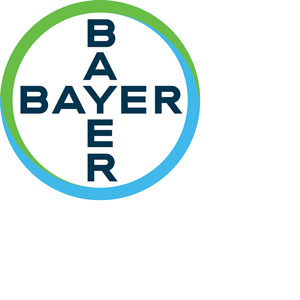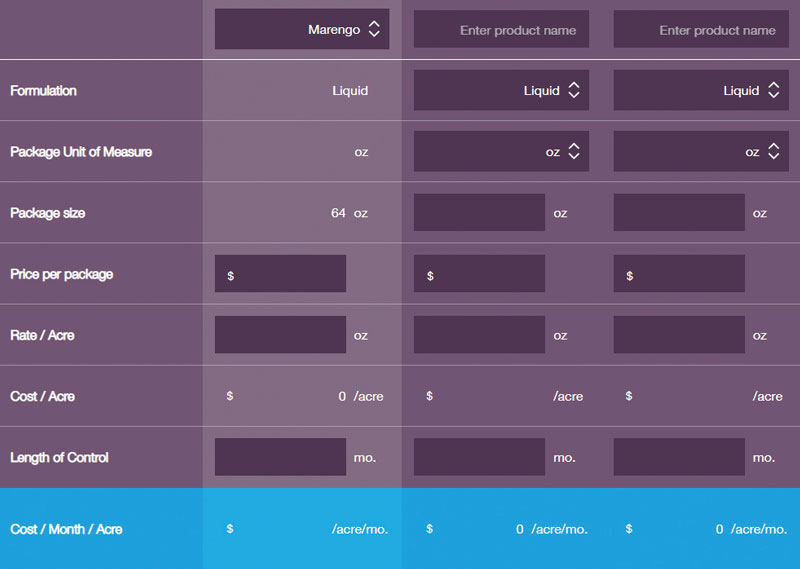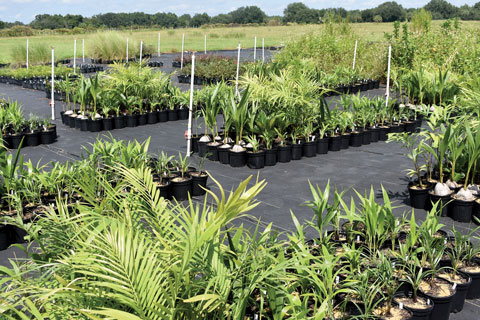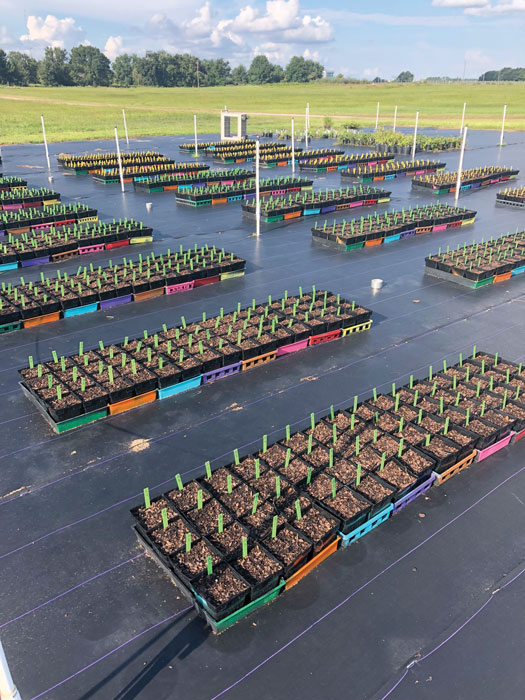10/1/2019
Improving Nursery Weed Control with Better Herbicide Rotations
Chris Marble, Ph.D. & Aaron Palmateer, Ph.D.

Weeds are a constant issue in nursery and greenhouse production, and can ruin an otherwise healthy and marketable crop. Weed management in ornamentals presents many challenges, including crop diversity, limited or no postemergence herbicide options, sensitive crops, and the fact that the nursery environment is perfect for many weeds to thrive. While most growers utilize preemergence herbicides, it’s still common for weeds to break through and continue to cause problems, including the need for lots of hand weeding. In many cases, weed control can be significantly improved by developing a better herbicide rotation plan for your operation.
Before you make changes to your herbicide program, it’s important to make sure that other principles of weed control are followed. Just like any other pesticide, no herbicide is completely effective 100% of the time. The following principles will ensure that you’re getting the best bang for your buck from your herbicide applications:
Focus on sanitation and prevention first
The goal of a weed control program should be to reduce hand weeding—but you want to reduce the total time spent hand weeding, not the frequency. The cleanest nurseries scout and hand weed as frequently as possible. Hand weeding on a bi-weekly schedule has been shown to reduce labor costs by 40% or more compared with just weeding prior to an herbicide application. Frequent weeding prevents weeds from producing seeds. This reduces weed pressure dramatically throughout the season.
It’s also important to keep non-crop areas as clean as possible. Instead of only using glyphosate or other postemergence herbicides in these areas, utilize preemergence herbicides in a tank-mix with your postemergence herbicides. Marengo (indaziflam) and SureGuard (flumioxazin) are good choices for non-crop areas and can prevent the need to constantly apply postemergence herbicides. In greenhouses or propagation areas, these herbicides can also be used on the floors inside the houses if the label precautions are followed.
Cost-in-use per month of control
Combined with effective sanitation, preventative applications of preemergence herbicides can cut production costs significantly and save money in time and labor required to control weeds. The use of preemergence herbicides reduces the potential for weed outbreaks, reducing labor costs for hand weeding and postemergence herbicide applications. In fact, a single application of Marengo at the high labeled rate can provide weed control for up to eight months. Every time a grower has to make a pesticide application, there’s site preparation, application prep (i.e., preparing equipment and product mixing), application of the treatment and then any necessary clean up (equipment, disposal, etc.). Avoiding more frequent applications saves time and money, highlighting the value of using a preemergence herbicide for long-lasting weed control.
Bayer recently introduced a free cost-in-use calculator that aims to help growers determine the actual cost of preemergence herbicides on a per month basis. Growers can enter a few pieces of information about each product they wish to compare and the calculator will determine the cost per acre per month of weed control. To use the calculator, visit es.bayer.us/marengo-calculator.
 Utilize non-chemical tools when herbicides aren’t an option
Utilize non-chemical tools when herbicides aren’t an option
Inevitably, there will be some ornamentals in your catalog that simply aren’t tolerant of a wide range of herbicides. These are areas where solutions, such as mulch, make a lot of sense from an investment perspective. Mulch is much more expensive than herbicides, but materials like pine bark nuggets or rice hulls can provide excellent weed control and prevent the need for constant hand weeding when herbicides aren’t an option. In almost all cases, a single mulch application will provide better control than a single herbicide application.
Pictured: Growers can plug their own information into Bayer’s free cost-in-use calculator to compare herbicide costs.
In Florida and elsewhere, some growers subdress their fertilizer to both prevent fertilizer losses if pots are blown over and to reduce weed growth. Subdressing fertilizer to a depth of 2 in. can reduce weed growth by over 90% compared with topdressing or incorporating. Weeds simply won’t grow in container media if they can’t reach the fertilizer.
Calibrate application equipment
The number one reason herbicides fail is that they’re not applied at the right rate. If the rate is too high, chances of crop injury increase and costs rise. If rates are too low, the herbicide won’t control weeds; therefore, more hand weeding is needed and weed management costs go up. Either way, costs will increase if the applicator isn’t calibrated.
There are many great resources available from university extension offices, chemical distributors/manufacturers and equipment manufacturers that can be referenced to calibrate specific types of application equipment. Catch cups or catch pans can be distributed throughout production blocks to check and make sure that granular products are being applied properly. In the real-world, it’s going to be difficult to apply the exact, precise rate, but an application within +/-10% of the target is essentially perfect.
Examine your rotation schedule
Once you have the above principles dialed in, it’s time to examine your rotation and herbicide tools. Currently, there are over 25 preemergence herbicide products labeled for use in nurseries, but just a few different modes of action (MOA)—including Weed Science Society of America’s herbicide MOA groups 3, 14, 15, 21 and 29. With most herbicides, growers are limited to around two to three applications per year, but herbicide applications every eight to 10 weeks throughout the year (or growing season, dependent upon climate) is often recommended, meaning multiple herbicides will be needed.
 Weed efficacy guides, such as the 2017 Southeastern U.S. Pest Management Guide for Nursery Crops, can be used to reference which herbicides are most effective on different weeds throughout the year and determine which crops these herbicides can be applied. The first priority after determining herbicide plant safety should be selecting an herbicide that’s highly effective on your most troublesome weeds during a particular time of year.
Weed efficacy guides, such as the 2017 Southeastern U.S. Pest Management Guide for Nursery Crops, can be used to reference which herbicides are most effective on different weeds throughout the year and determine which crops these herbicides can be applied. The first priority after determining herbicide plant safety should be selecting an herbicide that’s highly effective on your most troublesome weeds during a particular time of year.
Pictured: To ensure growers are using safe and effective herbicides, trials—such as the one pictured—test products like Marengo G in nursery environments. Both Marengo and Marengo G have added tolerant plant species to their updated labels. Photo courtesy of Dr. Chris Marble.
As several herbicides are likely effective, the next step would be to select the best option that controls both the most troublesome weed and the second or third most troublesome weed(s). For the next application, an herbicide with similar efficacy, but a different MOA, could be chosen. This process is repeated throughout the year until a preemergence herbicide program is developed for the year. Some of the most successful nurseries may utilize four or more different preemergence herbicide products, using each to take advantage of their strengths.
Growers will have many more options for over-the-top applications using granular products. However, spray-applied herbicides offer some advantages including: 1) Usually easier and faster to apply accurately, especially if using boom sprayers; 2) lower chemical costs; and 3) they can be applied to wet foliage. However, spray-only rotations are more difficult to develop because, for over-the-top applications, growers are usually limited to using MOA groups 3 (Pendulum, Barricade, etc.), 15 (Tower), 21 (Gallery) or a combination, such as groups 3 + 21 (Gemini).
 New label update for Marengo and Marengo G
New label update for Marengo and Marengo G
Bayer is excited to share label updates for Marengo and Marengo G. The most recent Marengo label added 175 tolerant ornamental cultivars now totaling 267. Marengo controls or suppresses 98 weeds, with 14 new species added. Marengo is now labeled for over-the-top applications to 12 tolerant plant species in a nursery setting and includes fewer plant restrictions, making it even more convenient for growers to use.
Pictured: Pots from a large preemergence trial tested 28 herbicides and tank-mixes for control of 15 different weed species. Results informed effective preemergence herbicide plans to provide growers the most “bang for their buck.” Photo courtesy of Dr. Chris Marble.
Marengo G is now also labeled for control or suppression of 98 weeds and includes 266 tolerant ornamental cultivars with only 10 plant restrictions. Be sure to contact your Bayer ornamental specialist for further details. GT
Chris Marble, Ph.D., is an Assistant Professor at the University of Florida, Mid-Florida Research and Education Center, and Aaron Palmateer, Ph.D., is a Senior Technical Service Representative for Bayer.
ALWAYS READ AND FOLLOW LABEL INSTRUCTIONS
Bayer Environmental Science, a Division of Bayer CropScience LP. 5000 CentreGreen Way, Suite 400, Cary, NC 27513. For additional product information, call toll-free 1-800-331-2867. environmentalscience.bayer.us. Not all products are registered in all states. Bayer, the Bayer Cross and Marengo are registered trademarks of Bayer. SureGuard is a registered trademark of Valent U.S.A. LLC. ©2019 Bayer CropScience ES-719-MAR-103-A-R1